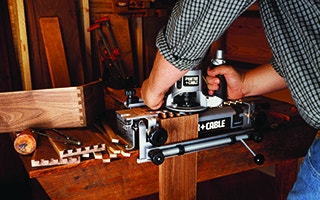Does the Dovetail Angle Affect Joint Strength?
Woodworking Question: I've seen 7°, 9° and 14° dovetail bits, and even one that was 7.5°. Does the angle of a dovetail affect the strength of the joint, or is it just cosmetic? According to at least one scientific study, dovetail angles don't affect the strength of the joint and should just be chosen based on your bits and the aesthetics.
Answer from the experts: Clearly, there's no shortage of advice about the “best” dovetail angle: Some woodworkers recommend using 12° for "coarse work" and 7° to 10° for decorative joints. Lower (7° to 9°) angles are often advised for joining hardwoods, while higher angles (10° to 14°) are recommended for softwoods and even higher angles (14° to 18°) for half-blind dovetails.
Here’s the scientific evidence: In 1958, the U.S. Forest Products Research Laboratory tested how dovetails cut at angles ranging from 7.5° to 17.75° in both hardwood and softwood samples fared when the joints were mechanically pulled apart under great force. The study found that, in all cases, “… the dovetail angle made absolutely no difference to the strength of the joint.”
These findings support a cosmetic approach for cutting dovetails at whatever angle looks best to you. You might prefer the subtle look of slender lower-angle dovetails or the "crafted" look of chunkier higher-angle joints. Personally, I feel that 8° dovetails look better with thicker parts and/or when joining contrasting woods, while 12° to 14° pins and tails look best with thin parts and wider dovetailed assemblies.
Commercially made dovetail router jigs usually limit your choice of joint angle. For example, the template fingers on Leigh's jigs are fixed at 8°.
Keep the inspiration coming!
Subscribe to our newsletter for more woodworking tips and tricks




